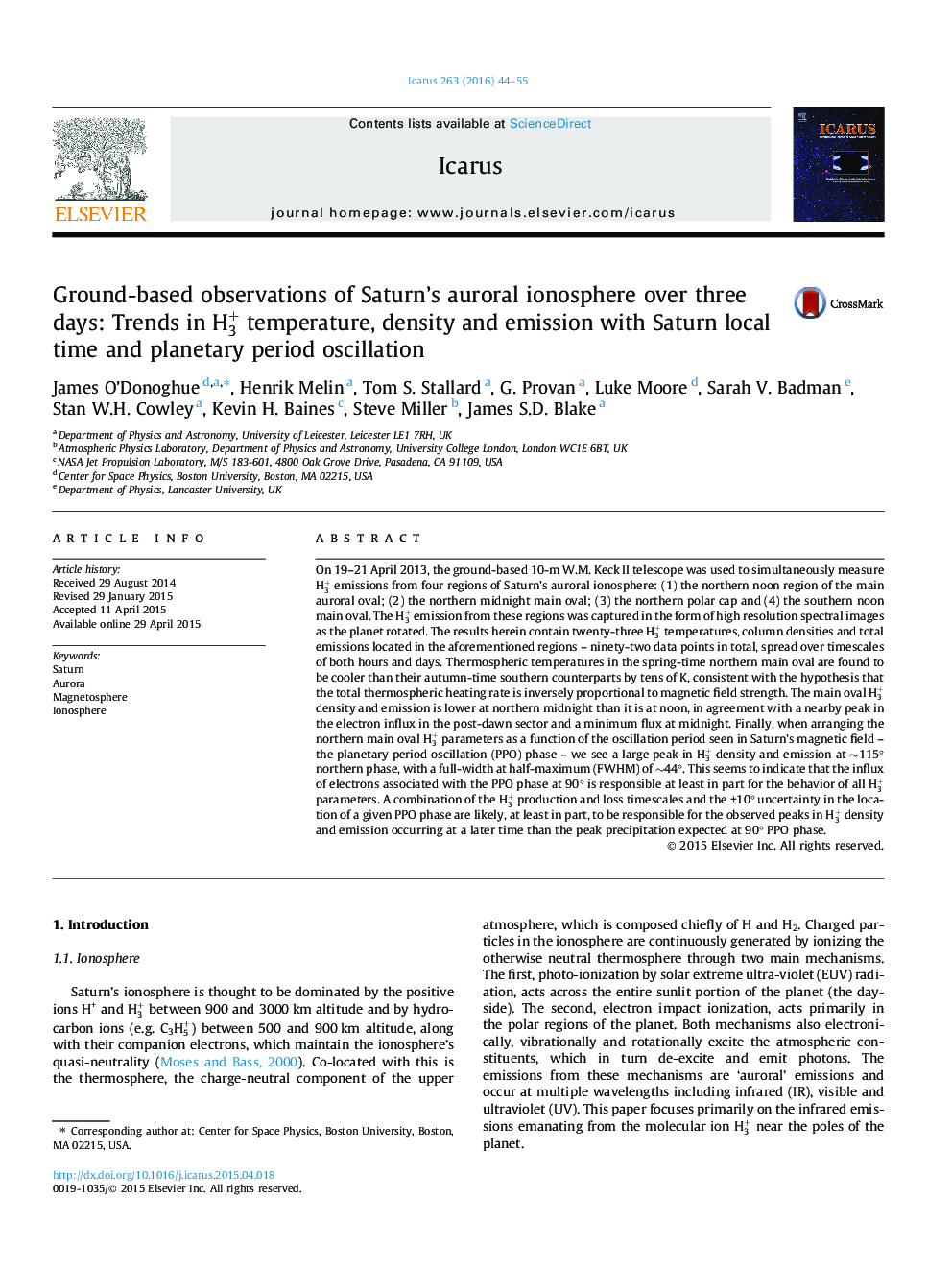| کد مقاله | کد نشریه | سال انتشار | مقاله انگلیسی | نسخه تمام متن |
|---|---|---|---|---|
| 8135878 | 1523527 | 2016 | 12 صفحه PDF | دانلود رایگان |
عنوان انگلیسی مقاله ISI
Ground-based observations of Saturn's auroral ionosphere over three days: Trends in H3+ temperature, density and emission with Saturn local time and planetary period oscillation
دانلود مقاله + سفارش ترجمه
دانلود مقاله ISI انگلیسی
رایگان برای ایرانیان
کلمات کلیدی
موضوعات مرتبط
مهندسی و علوم پایه
علوم زمین و سیارات
علوم فضا و نجوم
پیش نمایش صفحه اول مقاله

چکیده انگلیسی
On 19-21 April 2013, the ground-based 10-m W.M. Keck II telescope was used to simultaneously measure H3+ emissions from four regions of Saturn's auroral ionosphere: (1) the northern noon region of the main auroral oval; (2) the northern midnight main oval; (3) the northern polar cap and (4) the southern noon main oval. The H3+ emission from these regions was captured in the form of high resolution spectral images as the planet rotated. The results herein contain twenty-three H3+ temperatures, column densities and total emissions located in the aforementioned regions - ninety-two data points in total, spread over timescales of both hours and days. Thermospheric temperatures in the spring-time northern main oval are found to be cooler than their autumn-time southern counterparts by tens of K, consistent with the hypothesis that the total thermospheric heating rate is inversely proportional to magnetic field strength. The main oval H3+ density and emission is lower at northern midnight than it is at noon, in agreement with a nearby peak in the electron influx in the post-dawn sector and a minimum flux at midnight. Finally, when arranging the northern main oval H3+ parameters as a function of the oscillation period seen in Saturn's magnetic field - the planetary period oscillation (PPO) phase - we see a large peak in H3+ density and emission at â¼115° northern phase, with a full-width at half-maximum (FWHM) of â¼44°. This seems to indicate that the influx of electrons associated with the PPO phase at 90° is responsible at least in part for the behavior of all H3+ parameters. A combination of the H3+ production and loss timescales and the ±10° uncertainty in the location of a given PPO phase are likely, at least in part, to be responsible for the observed peaks in H3+ density and emission occurring at a later time than the peak precipitation expected at 90° PPO phase.
ناشر
Database: Elsevier - ScienceDirect (ساینس دایرکت)
Journal: Icarus - Volume 263, 1 January 2016, Pages 44-55
Journal: Icarus - Volume 263, 1 January 2016, Pages 44-55
نویسندگان
James O'Donoghue, Henrik Melin, Tom S. Stallard, G. Provan, Luke Moore, Sarah V. Badman, Stan W.H. Cowley, Kevin H. Baines, Steve Miller, James S.D. Blake,